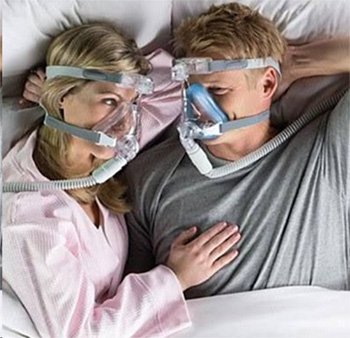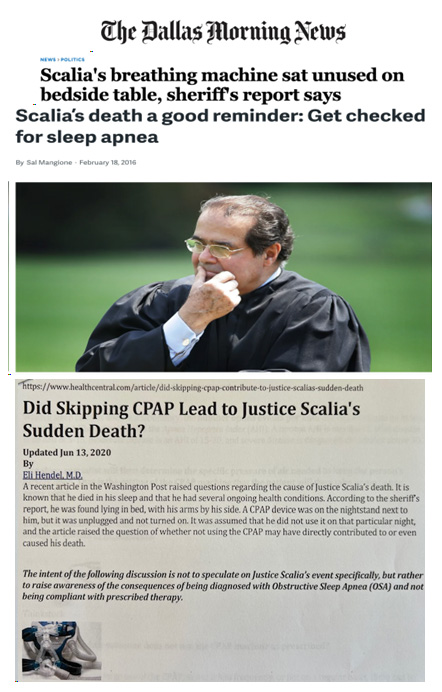CPAP and Its Failures
CPAP is a frequently used device to treat Sleep Apnea. The selling of CPAP masks and machines is “Big Business.”
For instance, “the global CPAP devices market size was evaluated at 2.41 Billion USD in 2020, which has grown by over 4.2 Billion by 2022 – and it continues to grow!
In the United States 8 Million CPAP masks are sold each year.
While there are Many problems with CPAP (e.g., frequent Sinus Infections; requires frequent cleaning, etc.), there are 3 MAJOR Problems with CPAP therapy:

UNTREATED SLEEP APNEA
What does it mean if you have Untreated Sleep Apnea: It means your Risk for Devastating and Lethal Risks MARKEDLY INCREASE
Here are some of the approximate Risks of UNTREATED SLEEP APNEA:

Clinical Inconsistent Effectiveness of CPAP
Here are just some of the clinical reports regarding the Clinical Inconsistent effectiveness of CPAP therapy:
Generally
“CPAP’s role in patients with OSA is controversial, with variable results from cohort studies to date.”
(1). Gleeson M, McNicholas WT. BIDIRECTIONAL relationships of comorbidity with obstructive sleep apnoea. Eur Respir Rev 2022; 31: 210256
Stroke
“Although the SAVE trial reported no reduction in stroke rate with CPAP therapy a more recent post hoc analysis of this trial Identified self-reported snoring as a risk factor for incident stroke.”
(1). McEvoy RD, Antic NA, Heeley E, et al. CPAP for prevention of cardiovascular events in obstructive sleep apnea. N Engl J med 2016; 375: 919–931.
(2). Gleeson M, McNicholas WT. BIDIRECTIONAL relationships of comorbidity with obstructive sleep apnoea. Eur Respir Rev 2022; 31: 210256 [DOI: 10.1183/16000617.0256-2021]
(3). Li J, McEvoy RD, Zheng D, et al. Self-reported snoring patterns predict stroke events in high-risk patients with OSA: post hoc analyses of the SAVE study. Chest 2020; 158: 2146–2154.
Lack of Cardiovascular Benefits
“Recent evidence has cast doubt on benefits in reducing comorbidities such as insulin resistance and cardiovascular disease.”
“Recent long-term randomized controlled studies such as the Sleep Apnea Cardiovascular Endpoints (SAVE) trial and the Randomized Intervention with CPAP in coronary artery disease (CAD) and OSA (RICCADSA) trial did not show any benefits from CPAP therapy in the secondary prevention of Cardiovascular morbidity or mortality in patients with moderate to severe OSA and pre-existing cardiovascular disease.
(1). Sánchez-de-la-Torre M, Sánchez-de-la-Torre A, Bertran S, Abad J, Duran-Cantolla J, Cabriada V, Mediano O, Masdeu MJ, Alonso ML, Masa JF et al.; Spanish Sleep Network. Effect of obstructive sleep apnoea and its treatment with continuous positive airway pressure on the prevalence of Cardiovascular events in patients with acute coronary syndrome (ISAACC study): a randomised controlled trial. Lancet Respir. Med. 2019. https://doi.org/10.1016/S2213-2600(19)30271-1;
(2). Maliheh Ghadiri, Ronald R. Grunstein; Clinical side effects of continuous positive airway pressure in patients with obstructive sleep apnoea; Official Journal of the Asia Pacific Society of Resperiology. Volume 25, Issue 6; June 2020; Pages 593-602; https://doi.org/10.1111/resp.13808
“more recent randomized controlled trials of CPAP therapy such as the SAVE trial have failed to show benefits in the secondary prevention of cardiovascular diseases, including HF,”
(1). McEvoy RD, Antic NA, Heeley E, et al. CPAP for prevention of cardiovascular events in obstructive sleep apnea. N Engl J Med 2016; 375: 919–931.
High Blood Pressure
While many studies indicate a reduction in BP with CPAP therapy, the effect is small at 2 mmHg ….
(1). Tamisier R, Lévy P. Management of hypertension in obstructive sleep apnoea: predicting blood pressure reduction under continuous positive airway pressure. Eur Respir J 2017; 50: 1701822.
COPD
“Patients with COPD-OSA overlap treated with long-term CPAP have a survival similar to patients with COPD alone,”
(1). Marin JM, Soriano JB, Carrizo SJ, et al. Outcomes in patients with chronic obstructive pulmonary disease and obstructive sleep apnea. Am J Respir Crit Care Med 2010; 182: 325–331.
(2). Machado M-CL, Vollmer WM, Togeiro SM, et al. CPAP and survival in moderate-to-severe obstructive sleep apnoea syndrome and hypoxaemic COPD. Eur Respir J 2010; 35: 132–137.
